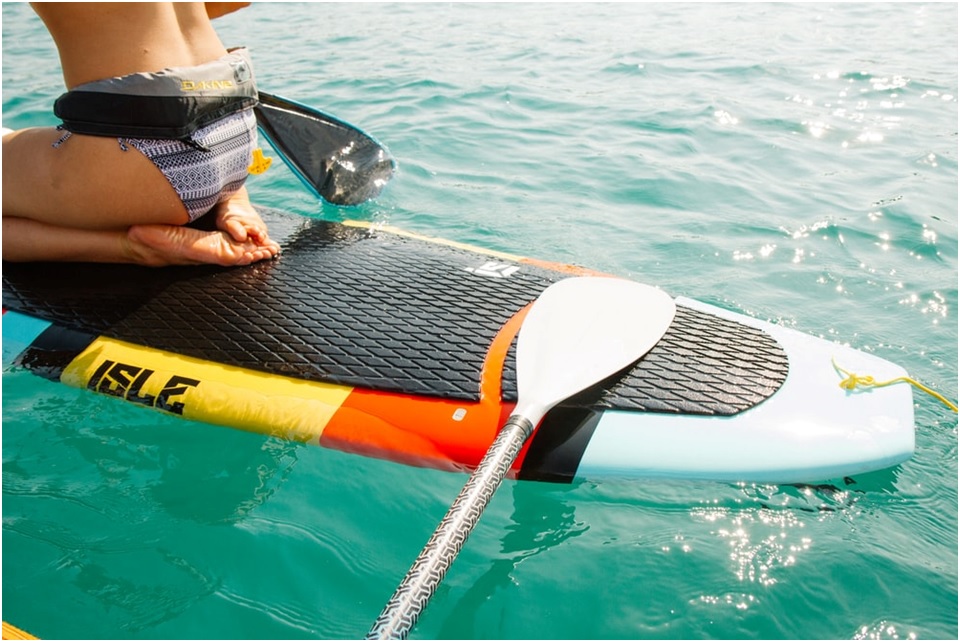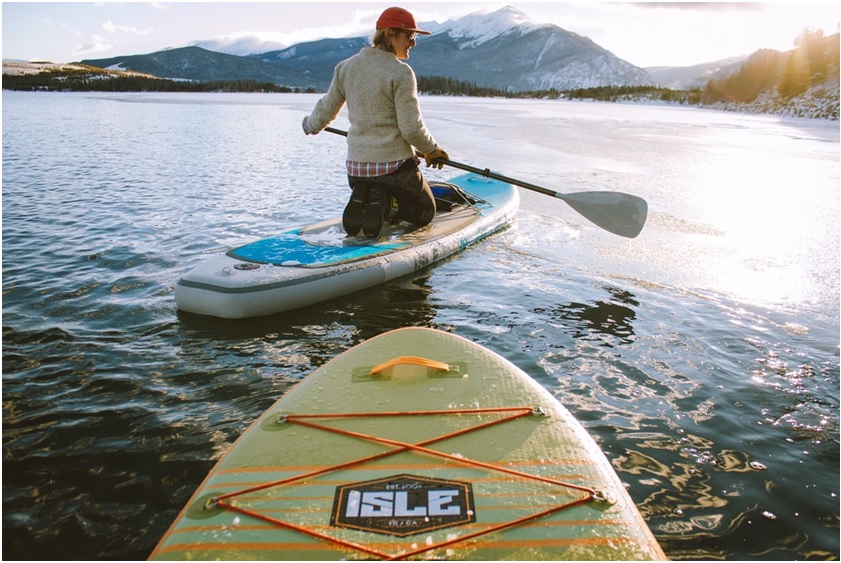Inflatable vs Non-Inflatable SUP: Which One is Right for You?

Stand up paddleboarding is a sport that is taking the world by storm. Anyone who lives near the ocean, a lake, a river, or a dam can all join in the fun of standing on an inflatable or hard board and paddling their way on the water.
If you’ve developed a curious mind when it comes to this water drifting sport, then you must’ve noticed that some are paddling on hard boards while others are cruising on inflatable ones. Which one is right for you?
Even though they kind of look the same, both come with different sets of benefits. Each board is also equipped for different kinds of people. If you want to find out whether an inflatable or non inflatable stand up paddleboard is best for you, then continue reading for the answer.
What’s the Difference Between the Two Boards?
First, let’s look at the differences between the two;
Inflatable paddle boards are becoming increasingly popular because they are very easy to transport. The entire unit can fit into a large bag that can be carried around like a backpack. Everything from the pump and repair kit to the inflatable unit can fit snuggly in a portable bag.
High end inflatables are manufactured with a high drop stitch count. This basically means that both the bottom and top layer is securely attached to each other without. The higher the drop stitch count the higher amount of air pressure the unit can take.
Inflatables from recommended brands can be pumped to a 16+ PSI, making them extremely durable and rigid. You might think that an inflatable SUP is similar to a lounger float for the swimming pool, but it’s actually much sturdier. It has to be since the user have to stand on top of it while balancing on the water.
On average, this board takes about 10 minutes to inflate with either a manual or automatic pump. To ensure that it reaches its full PSI air should almost be forced into the unit. This will ensure that it is sturdy enough for an afternoon on the water.
Non-inflatable SUP boards are the perfect choice if you are looking for high quality performance. Also known as hard, epoxy, fiberglass, or traditional paddle boards, they are strong and durable.
Similar to surf boards, non-inflatables consist of a foam core and a hard composite shell. Shells can be made from epoxy, fiberglass, bamboo, or wood. They usually have a glossy and bright finish with vibrant colors. Hard boards are easier to steer and much more responsive than inflatables. Because of their stiff exterior, they glide much better on the water.
The biggest difference between the two is the feeling on the water. One is stiff while the other is softer. As a result, the stiffer hard board also performs much faster than the softer inflatable.
Inflatable paddleboards are lightweight, easy to carry around and repair, and durable. On the flip side, they are slightly slower and needs to be pumped up before using.
Hard boards have a better and faster performance on the water, looks more aesthetically pleasing, and don’t need any pumping. On the con side, they can crack when left in the sun too long or when smashed against rocks.
Choosing your first SUP is a fun activity, but you also need to know what to consider. In order for you to get the best out of the unit. Watch this for tips on how to choose your first stand-up paddleboard: https://www.youtube.com/watch?v=ySG–pmxD7I
Still confused whether to choose an epoxy or inflatable board? Here are a few tips on things you have to consider when deciding which board is right for you:
PORTABILITY
Depending on your needs, you have to consider how easy it is to transport your board. Since inflatables are very lightweight and can be packed neatly into a backpack, you can throw them in a suitcase to take with you on a weekend away.
Even taking them on an airplane will be hassle free. Taking a surf or hard board on an airplane will cost you extra airline fees.
Hard boards also need special car racks installed to transport around. If you don’t have an SUV or a truck, then you might have some trouble moving it around. If you live close to the water, then a quick carry to the beach won’t be that difficult. But if you want to paddleboard on a lake in the woods, you might have to consider packing your paddleboard and equipment in a backpack for easy transport.
Do remember that you are going to have to pump up your inflatable unit before using it. So, if you’re more of a drop-and-go kind of person, then a hard board is the better choice.

HOME STORAGE
When it’s SUP off-season, you will want to store your board inside the house in order to maintain it better. Hard paddle boards take up a lot of space and you might want to install specific storage racks in the garage or purchase paddle board storage rack to keep them on.
Apartments with minimal storage space or no garage, won’t be the perfect home for a 9-12 foot long hard board. In this case, a compact inflatable bag will be a great option as you can store it under the bead or in the top of a cupboard.
DURABILITY AND STRENGTH
Inflatable paddle boards are more durable than hard boards. This is because they can’t scratch, crack, or snap. When you drop your inflatable board accidentally, it won’t break at all. At the most, you might have to repair a few punctures, which is always easy to do with a simple repair kit.
Even though hard boards aren’t as durable they make up with sturdiness and speed on the water. It’s up to you whether you want to compromise durability over speed or vice versa.
To understand the construction of boards and their durability, check this out.
COST
Inflatables are much more affordable than epoxy boards. Making them perfect for first-timers and families. High quality hard boards will cost more than $800, since they are made from harder and more durable materials. They will also come with customizable paint jobs and funky color designs that are glossy and vibrant.
Hard boards that cost less than $800 are typically made with cheaper materials and won’t be as durable. Cheaper materials will also be difficult to repair and maintain. Investing in a well-known brand will save you a lot of money in the future.
If you don’t want to spend money on a brand new board, then you can always check online to buy previously owned boards. You might just find great specials buying a board off of someone.
When you do spend a lot of money on a new board, make sure that there’s a decent after-purchase support put in place. Or at least a warranty.
PSI
If you are going to invest in an inflatable, then you have to check the PSI. The lower the PSI, the softer it will be on the water, affecting the paddleboarding experience. It’s recommended that users purchase inflatables with a PSI of over 16.
Together with the PSI, the inflatable board should have a good dropstitch count as well.
Considering the portability, speed, cost, PSI, function, and durability, you will be able to figure out which one is right for you. No matter which board you decide to go with, remember to practice all safety measures when paddleboarding on the open ocean.
Paddleboarding can be loads of fun. If the standup paddleboarding bug hasn’t bitten you yet, then drive to your nearest SUP for a class or two. Before you know it, you’ll be investing in your own board that you’ll take along, wherever you go.